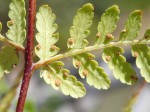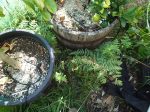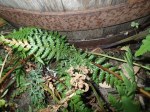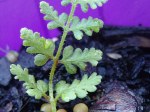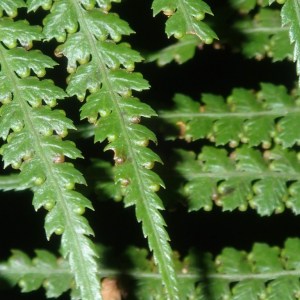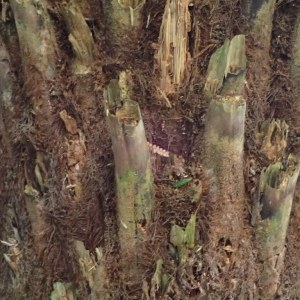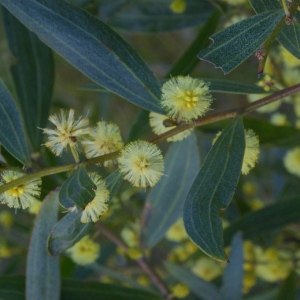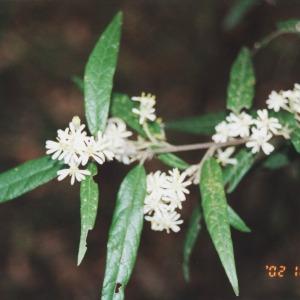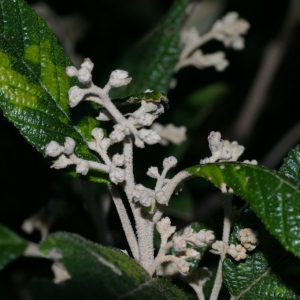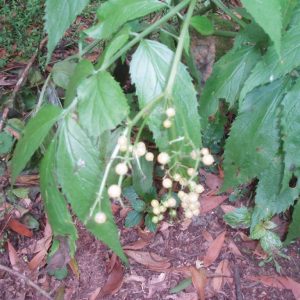Ferns are a vital component of a number of the vegetation communities (EVC’s) that exist in our district e.g. Wet and Damp Forests. However when an area is being replanted ferns are often left out of the mix, mainly because they are tricky and more expensive to propagate and may also struggle with being transplanted. The upside is that given the right conditions ferns can easily come back eventually by themselves over time.
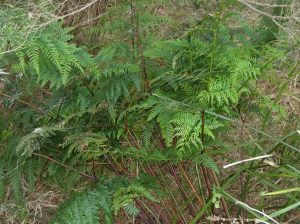
A fantastic example of ferns ability to spread can be found in my own garden. I live on a property which is next to farmland and a dry schlerophyll forest, the rainfall average is about 700mm a year and the nearest fern gully would be around 6km away as the crow flies. Over the last year or so I have been amazed at the ferns that have been popping up in my , garden. The first one I noticed was growing in a protected spot next to some tea tree, initially I had assumed it was just a bracken fern (pterdium esculentum) which is common here (like everywhere else). I was in the process of learning to identify my ferns better and one day while walking past this fern I realised it was in fact a different species, which turned out to be pteris tremula (Tender Brake).
My next and biggest discovery came when I noticed to my surprise some ferns coming up in a corner of my vegetable patch where I have a row of citrus trees planted in large pots. I have now had at least 4 different species of fern appear, all of which you would not expect to find anywhere near where I live. In this area as well as Tender Brake, I have found Histiopteris incisa – Bats Wing-fern, Hypolepis rugulosa – Ruddy Ground-fern and what I am fairly sure at this stage of growth are 3 separate Dicksonia antarctica (Soft-tree ferns). With close inspection I can still see some young sporophytes (baby ferns) that are too small to identify the species. I also discovered another spot in the garden where a Pteris tremula has popped up next to a raised garden bed.
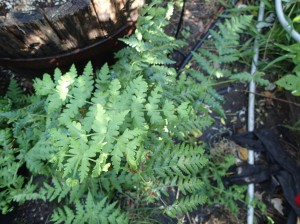
The key thing about all the sites where ferns popped up was that they were shaded and sheltered and they had good moisture, in this case as a result of both artificial watering, but also probably because of the milder and wetter summers we had had over a couple of years. Having bare soil would have also been a factor, prior to finding that the ferns were growing I was periodically spraying the area where they were with Glyphosate (Roundup) to keep the grass at bay. A key way to promote the regeneration of ferns on your site may be to provide some sheltered micro-climates where ferns can develop. Logs and rocks not only provide potential habitat for animals to shelter they can also provided a moist shaded environment suitable for ferns to recolonise your site.
The spores responsible for the appearance of these ferns were either possibly brought in to my place via me (off my shoe or clothing) but also possibly by the wind as they are so light that they are thought to be able to carry many kilometres.


